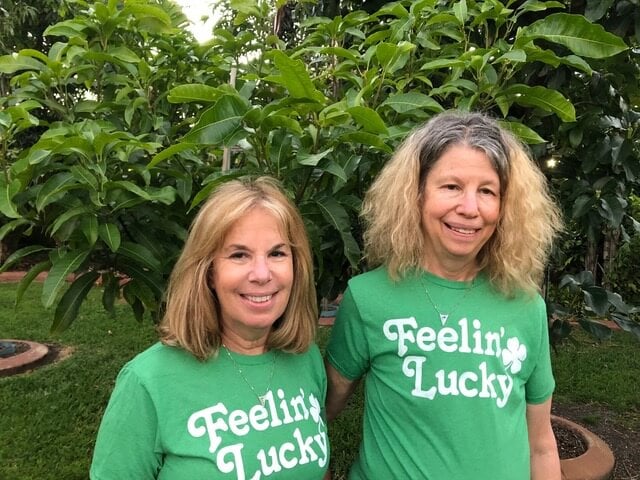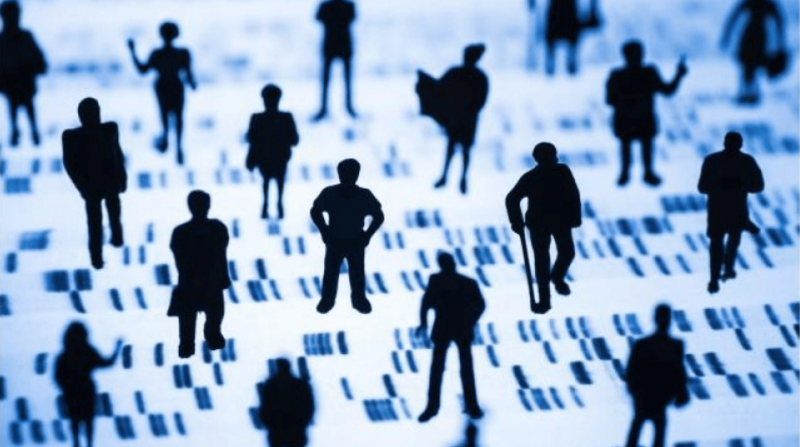I received these emails recently:
You have new matches at GEDmatch!
You have new DNA Relatives (23andMe)
When I ignored a missive from AncestryDNA, the company sent a “You have an unviewed DNA match to explore” e-mail.
Given the undulations of stress that follow contact from the DNA testing companies, I was thrilled to see a new article in The American Journal of Human Genetics, “Family secrets: Experiences and outcomes of participating in direct-to-consumer genetic relative-finder services.” I’d read books on the subject – Libby Copeland’s The Lost Family even told my story – but the new report reflects and distills the opinions of thousands of individuals.
And I learned that of the various scenarios that lead to the discovery of new relatives – orphans, adoptions, affairs, hospital errors, deception, secrets – my particular origin, from a sperm donor, elicits the most angst.
My journey
Finding new relatives is especially odd for me, being a geneticist.
My first half-sibling contacted me in September 2018, related in my first article, here at Genetic Literacy Project. It was published on January 16, 2019 – one week before my second half-sibling dropped out of the sky. Others soon followed. I think there are eight of us, that we know of.
Our tale became a Tiny Love Story in the New York Times’ Modern Love series the final Sunday of 2019 and made it into the calendar based on the series. Then I told the tale for the March 2, 2022 Modern Love podcast “You May Think You Know Your Parents (That is, until you have a startling revelation about them in adulthood).”

My half-siblings and I still don’t know the identity of our biodad. In fact, I returned from visiting half-sister #2 in Florida days before lockdown. Doing the podcast recently made me rethink it all, and then the new article appeared in the genetics journal.
First author Christi J. Guerrini JD, MPH, from the Center for Medical Ethics and Health Policy at Baylor College of Medicine and a team of genetic genealogy luminaries said in an interview with the journal:
Everyone on the team is involved in studying the ethical, legal, and social implications of direct-to-consumer genetic testing, and we’ve been paying attention to stories in the media about individuals who have made surprising family discoveries from these tests and relative-matching services. We wanted to understand if these and other kinds of discoveries are common, how they’re experienced by those making the discoveries, and what they’re doing, if anything, as a result.
The testing companies offer the genetic relative-finder service, which compares the DNA data of consenting participants to find relatives in the database. Participants opt in to receive their list; there’s no charge. The other types of information that these companies provide – health and wellness and ancestry superimposed on world maps – are better studied than the emotional territory of tangling family trees.
The lists of found relatives are long, now that so many people have their DNA on file. My roster from AncestryDNA places my full sister on top, then the half-siblings, then half nieces and nephews, descending rapidly into more distant cousins. My AncestryDNA list is now at 183,546, reaching back to sixth cousins. But all of us Ashkenazi Jews are likely sixth cousins, or closer.
I realized instantly that the closeness of relatedness designations are doctored – something I think the companies due to avert people flipping out. For example, I share 24 to 30% of my DNA with each of the first three half-sisters on my list. Full siblings share 50% of their DNA, so half-siblings theoretically share 25%. My three hit that mark. Yet the companies list us, still, as first cousins.
My new family took a more DIY approach. We formed quite a team.
I understood the genetic relatedness metric – the centimorgan – so I figured out the locations of shared sections of DNA on their chromosomes, printing out color-coded aligned maps, to deduce how, exactly, we were all connected.
A half-niece, who is an attorney, proved expert at sketching and linking family trees and tracing the branches back as more relatives surfaced. And my second half-sister was the only one of us who had a living relative old enough and willing to divulge that yes, a sperm donor was involved.
Bingo! We weren’t linked by a complex series of affairs or baby snatchers.
The lawyer half-niece then triangulated who we all shared among those long lists of company-generated relatives. Next she found those individuals on Facebook to zero in on the acknowledged family – that is, the children, more half-siblings, that the sperm donor knew he had. And their children.
We found them. Got two surnames and eliminated one. Traced the family back to three brothers, two of whom had come to Brooklyn at the time that they might have made their, er, donations.
We sent Facebook messages to the biofamily, but got no answers. A third cousin offered to reach out to relatives in Poland and Russia, but that trail went cold as COVID hit.
So what did the new study find that I didn’t already know? A lot. And it validates all I have felt about this most curious situation.
FamilyTreeDNA provided the data
The researchers contacted a million people who took ancestry tests from FamilyTreeDNA. They were the first company to market ancestry tests to the public, in 2000. (Disclosure: I consulted for them.) So their database is the largest.
The study sought to understand:
- motivation for receiving genetic relative lists after submitting DNA
- what consumers learned about themselves and their families
- responses and reflections on the personal impacts of these discoveries
People cited a few motivations. First was building a family tree due to general curiosity. Some test takers were searching for a particular relative, or finding people with whom to share health information.
Some customers didn’t believe the part of the world they were assigned and sought confirmation through specific individuals. A few sent in their samples to help with criminal investigations.
Some were searching for a child given up for adoption, or a child of adoption sought biological parents. And some people had always felt out of place in the families that raised them. Might there be a biological explanation?
An impressive 23,196 people responded as having made a discovery, with 14,134 making a specific discovery. Those included finding out that a parent wasn’t biologically so, that the parent had other kids, an unknown health problem, or unexpected ethnicity.
Ten percent of respondents who learned they had a genetic relative found a grandparent, and ten percent found a full or half sibling, while 7% identified a biological father. Most people who contacted such close relatives received responses.
The stress of donor sperm scenarios
 A corollary to finding out that a parent isn’t biologically so is the further discovery of half-siblings, and their relatives. It was a comfort to learn that my feelings of not knowing who I am hadn’t been out of the ordinary.
A corollary to finding out that a parent isn’t biologically so is the further discovery of half-siblings, and their relatives. It was a comfort to learn that my feelings of not knowing who I am hadn’t been out of the ordinary.
“Compared to respondents making other types of discoveries, those who reported learning that they were donor conceived reported the highest decisional regret and represented the largest proportion reporting net-negative consequences for themselves and not feeling like themselves,” the researchers write.
Yup.
Beyond the shock of the discovery of half-siblings, the investigators point out, is confronting secrecy behind the sperm donation and the likely wish for anonymity. I’ve invented a narrative of my parents not knowing the origins of my sister and myself because that is more acceptable than even a well-meant untruth.
It’s little wonder that nearly half of those discovering they were donor-conceived in the study reported having sought professional help to process their emotions. Wrote one participant, ‘‘I questioned everything about my whole life and relationships. And I learned that needing a support group is a lifesaver.’’
Fortunately, most respondents were not distressed by their test results. Some reported making life changes as a result of their discoveries.
For those finding new medical information, risks were ruled in and out and tests and treatments amended. “My test ruled out 6 medical conditions that I didn’t have. I followed up with my doctor,” reported one consumer.
My new medical history eliminated elevated risk of colon cancer (less frequent colonoscopies!), glaucoma (ditto certain eye exams), and depression (phew). And my results enabled me to make a decision involving cancer surgery that may have saved my life.
Another patient’s cardiac findings led to new diagnostic tests and treatments. And yet another’s puzzling symptoms turned out to be due to an allergic reaction to a medication that the prescribing physician had missed.
Several test takers were prompted, or scared, into making diet and exercise changes, and more. ‘‘I was surprised at my desire to change my appearance to look more like my biological relatives after I found them. I’ve lost significant weight, now exercise regularly, and grew my hair longer,’’ one wrote.
And many participants embraced their newfound cultures, as the ads for the test companies show us. ‘‘I learned about Jewish history and began to observe certain traditions and even holidays,” wrote one respondent.
Some people moved to be near newfound relatives, while travel companies lurk on the ancestry websites, enticing folks finding their new beginnings to sign up for “heritage journeys.”
Here are some pros and cons on consumer DNA ancestry testing that test takers contributed:
The good:
‘‘It’s an essential part of being human to know who you are. These tools are vital, despite how painful the process may be.’’
‘‘Emotionally it helped several people in my family heal from a secret that was kept.’’
‘‘I am so pleased, besides being shocked to find relatives I never knew about. I have had positive contact with new people that are equally intrigued by it all.’’
The bad:
‘‘I tell people that are thinking of doing a genetic test to consider the results and not to do it if they are not prepared for a surprise.’’
‘‘In some ways I wish I had not done this testing. Truth is not always better.’’
Change for the better:
‘‘I’ve developed a new appreciation for how events in world history have shaped my life.’’
‘‘Changed my parenting.’’
‘‘Became a vocal proponent for adoptee rights.’’
Caveats
Of course the data in the study are a little fuzzy, riddled with selection bias. As anyone who’s joined a Facebook group for a specific health problem knows, the people with the worst cases are most active.
Many people never check their DNA results. A half-nephew had been messaging me for two years and I had no idea. I’d forgotten I’d ever been tested – I gave my sample at a genetics meeting years ago.
Respondents were self-selected and somewhat privileged, given that consumer DNA testing isn’t cheap. The mean age was 63, ranging from 18 to 99. The sexes were about equally represented, but 80% of respondents were white and 38% had a graduate degree. Most survey participants had their data on more than one company website or the clearinghouse GEDmatch. The 38 million DNA profiles at the companies include many redundancies.
The researchers conclude that use of genetic relative-finding services is common. But although most outcomes are rated as positive, “the consequences for individuals, while generally positive, can be far-reaching and complex.”
That’s probably an understatement. I still have to catch my breath when the emails from 23andMe, AncestryDNA, and GEDmatch come in.
Ricki Lewis, PH.D is a writer for PLOS and author of the book “The Forever Fix: Gene Therapy and the Boy Who Saved It.” You can check out Ricki’s website and follow Ricki on Twitter @rickilewis































